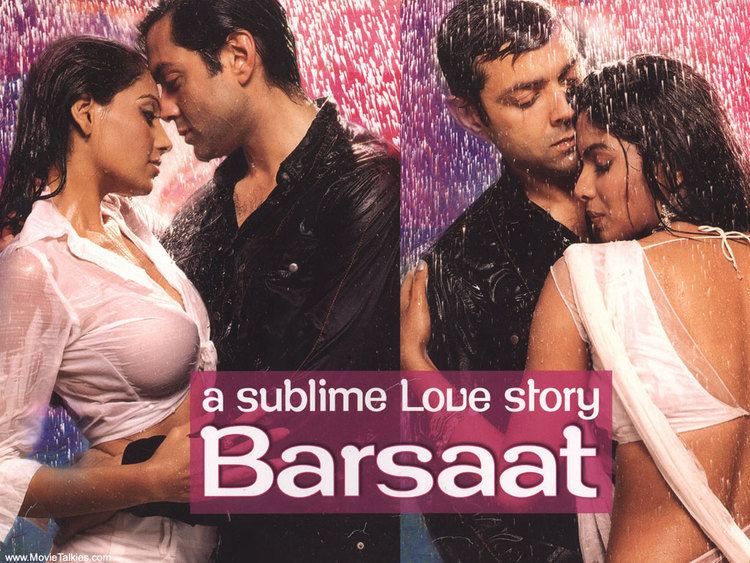

Again, while the film is almost forgotten, Sahir’s ode to life, sung to perfection by Kishore Kumar, has stood the test of time. In a year that had Sholay and Deewaar, Amitabh Bachchan had this much lower-key release whose theme is strongly reminiscent of the 1960 Raj Khosla film, Bombai Ka Babu. Burman, which is not surprising given that the former was by now an integral member of Pancham’s team. Though credited to Sapan Chakravarti, the music of this film echoes R.D. No one exhorts you better to flow with the tide than Sahir: Behte chalein hum masti ke dhaaron mein, gunje yahi dhun sada dil ke taaron mein, ab ruke na kahi pyar ka kaarwan, neet nayi rut ke rang me dhalti rahe zindagi. He could well be lamenting his own state in a changing environment when he writes, Bhuli duniya kabhi ki tujhe bhi mujhe bhi, phir kyon aankh bhar aayi’ Poor scripting is the least of the film’s flaws and the only thing one remembers about it today is Sahir’s ode to loss. The film was planned as a quickie to cash in on the stupendous success of Dev Anand’s Johny Mera Naam (1970). Not surprisingly, four of these songs had the Chopras ( Yash and Ravi) helming the film – a throwback to a relationship that went back to the 1950s. Burman, and all but one were sung by the new voice of the era, Kishore Kumar. Interestingly, all but one of these were composed by the king of music who ruled the 1970s and ’80s, R.D. Here then is a look at five lesser-talked-about gems that music aficionados seldom discuss vis-à-vis this legendary poet. At the same time, it is his songs that stand out in films that had little scope for the aesthetic Sahir brought to his work. A Wikipedia listing of his best 30 songs has none, barring two from Kabhi Kabhie, after 1970. Having said that, there’s no doubt that the last ten years of Sahir had few songs that matched those of his heyday in terms of sheer poetry, barring Kabhi Kabhie.


A new generation was looking for a new sound and new modes of expression, and it is futile to lament that Tu Ganga ki mauj had given way Aap ke kamre mein or that Tadbeer se bigdi hui had changed to Aa dekhe zara. I find that debatable, because music and lyrics are influenced by the society in which it operates. In what is called the ‘golden era’ of Hindi film music, Sahir Ludhianvi strode like a colossus, bigger than most of his contemporaries, his songs often articulating a film’s theme.īy the onset of the 1970s, however, most critics of the Hindi film song are unanimous that the best was over, the golden era was gone. As Javed Akhtar mentions in his conversation with Nasreen Munni Kabir, ‘Sahir never allows you to forget the surroundings, the backdrop … he constantly juxtaposes the beauty of nature with his love for a woman.’ That is why his songs transcended the limitation of a genre. Fewer still have evoked the wonder of nature as beautifully as Sahir: Thandi hawayen ( Naujawan), Yeh raat yeh chandni phir kahan ( Jaal) and Niley gagan ke taley ( Hamraaz). He was also a master of the philosophical statement, be it Main zindagi ka saath ( Hum Dono), Agey bhi jaane na tu ( Waqt) or Sansar ki har shay ka ( Dhund). Zindagi bhar nahin bhoolegi ( Barsat Ki Raat), Chalo ek baar phir se ( Gumrah) and Tum agar saath dene ka ( Humraaz) remain unsurpassed in the annals of Hindi film lyrics when it comes to conveying love and longing. If his most celebrated work in the 1950s – Pyaasa, Phir Subah Hogi, Naya Daur – defined the zeitgeist of the era, its socialist undertones and the eventual disillusionment creeping in with the state of the nation, in the 1960s, he wrote some delectable love ditties and ghazals. In what is called the ‘golden era’ of Hindi film music, Sahir Ludhianvi strode like a colossus, bigger than most of his contemporaries, his songs often articulating a film’s theme. On Sahir’s birthday, Shantanu Ray Chaudhuri looks at the ‘minor’ gems in the legendary lyricist’s oeuvre


 0 kommentar(er)
0 kommentar(er)
